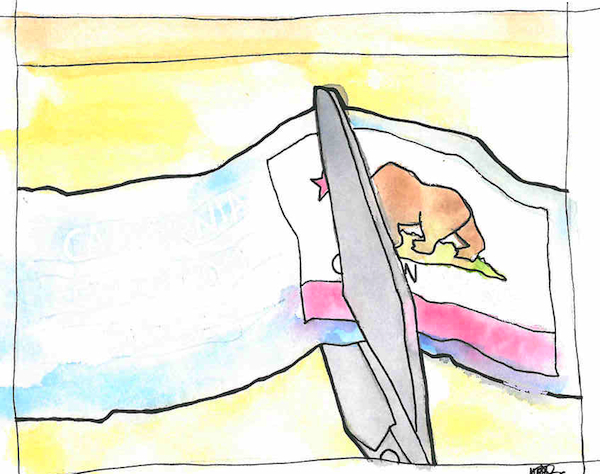
Then: small classes, one-on-one teacher student interaction, teacher assistants (adult TAs, not student TAs), enough classroom supplies, books, libraries, field trips, science labs, art, music, gifted and talented programs, special education programs, an all around good education, and even, dare I say, fun!
Now: large classes that occasionally don’t have enough seats for all the students, student TAs in a few classes, help from other classmates and the teacher if you’re lucky, hours of homework, decreasing classroom supplies, increased demands on everyone, a rushed classroom, a tired teacher, and busy, stressed students.
What brought on this change in schools in California? Well, let’s see… In the 1950s and ’60s, the California school system was third in the nation and, now, in 2011, in we have slipped to the bottom five. What could have happened to make such a drastic fall in California? There are several things, but the first and foremost is Proposition 13, which was passed in 1978.
If you know anything about Prop 13, you know it was a proposition to limit annual property taxes to only one percent of the estimated value of a home. This meant a drastic drop in tax revenues, and therefore, a drastic drop in funds available for education. As an added bonus, the measure required a two-thirds majority to increase any taxes in California, which is almost impossible with our diverse voting base.
You may be thinking, “Well, okay, that’s good and bad but what could this possibly have to do with schools in California?” Schools get funding from property taxes. And with barely any money from property taxes because of Prop 13, California schools have been slowly but steadily sinking below the rest of the nation in education.
Now, after 30 years, this proposition has taken its toll on California schools, and, unfortunately, it could get worse from here.
California’s massive debt still needs to be paid off, and since no new funds are appearing due to the slow economy, Ventura Unified has already had to cut $20 million from its budget. What this money would have been specifically used for is unknown, but it could have helped pay for more teachers or may have been able to stop the addition of more furlough days to the school year (there are already quite a few here at Foothill which may now increase in number). It could have even provided the district with simple things like textbooks, desks and classroom supplies. Now, we are hoping to hang on to what we’ve got.
Realistically, with the requirement of a two-thirds majority to pass a tax extension in Ventura to keep another $6 million from being lost, this just won’t happen. America, California, Ventura, they all claim to want the best for our children’s education, but, like the recent Wright Library scenario, as soon as we realize that we have to actually pay for it, we decline by voting down any measure that will raise much-needed revenue.
As a high school student, part of me at thinks “More furlough days means less school, nice.” But the truth is, as much as I like an extra day or two off, I do want a good education, and I clearly see its value. With these seemingly constant rounds of tax extensions and tax cuts causing California’s educational reputation to tank, I’m really not sure that I, or the children growing up now, can get the best possible education. And why? So we can save a few bucks on property taxes today, and lose a couple of generations of well-educated citizens tomorrow? How is that rational?
Is it worth it? Since when do we as citizens not have to pay for the benefits we receive? Our democracy depends upon a well-educated electorate. We not only need to demand it, we need to fund it.








